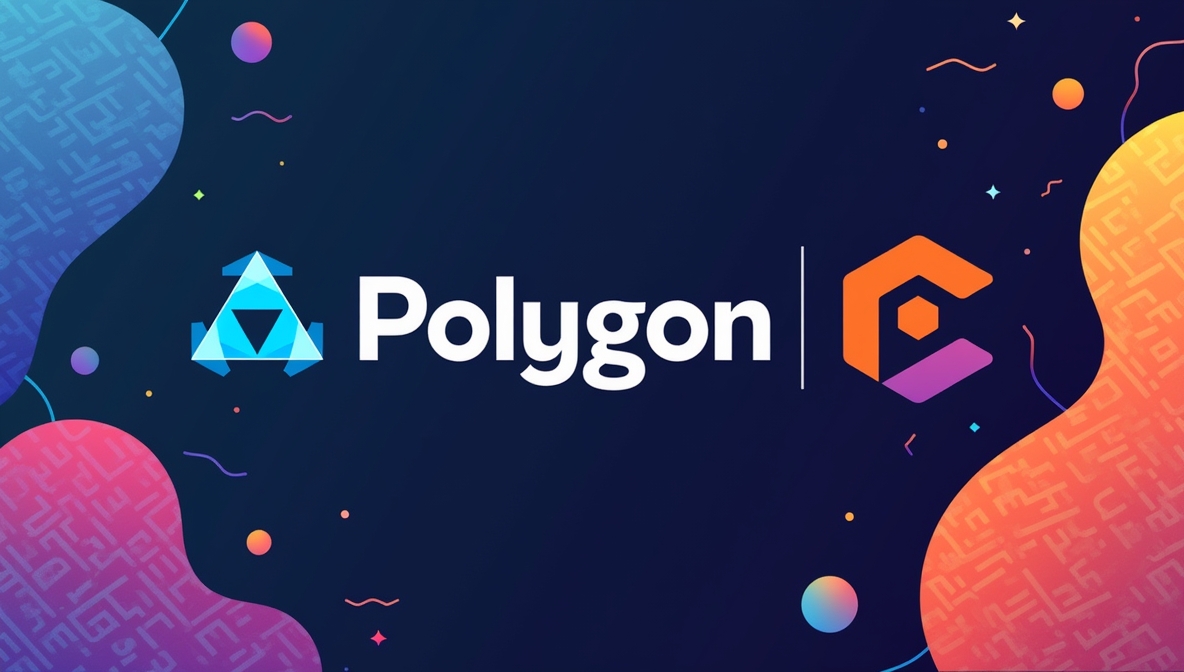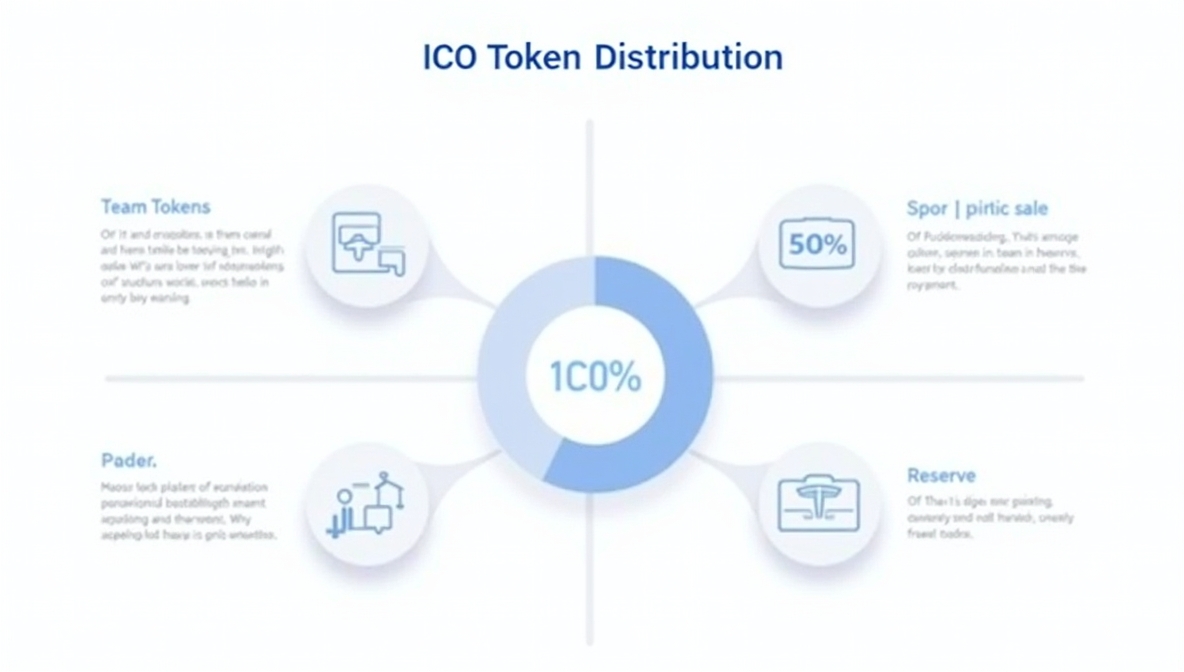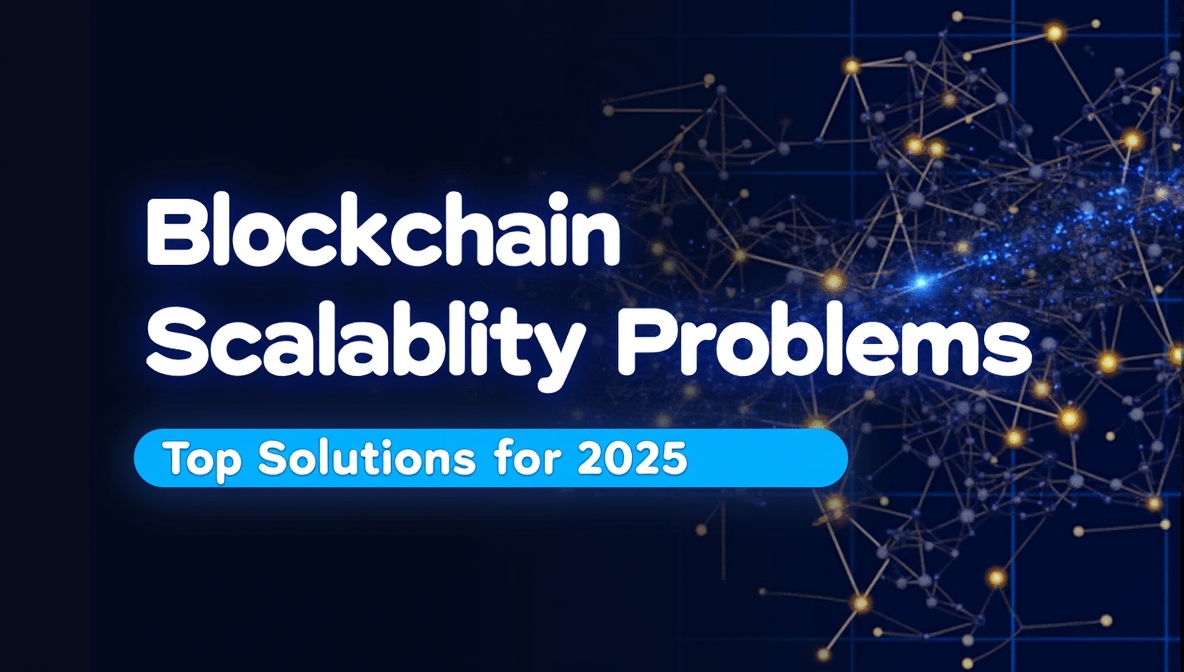Have you ever felt stuck with assets like real estate, private equity, or art unable to sell them quickly when you need capital? Whether you’re an investor looking to diversify, a business owner holding valuable assets, or someone simply curious about expanding investment opportunities, illiquid assets can often feel like a financial dead end.
Unlike stocks or bonds, which can be bought and sold in seconds on well-established markets, these assets require lengthy processes, niche buyers, and significant effort. The result? Your wealth remains tied up, restricting your flexibility and slowing financial growth.
But times are changing. With the rise of innovative solutions like blockchain tokenization, secondary markets, and securitization, the barriers that once made illiquid assets so difficult to trade are now breaking down. These advancements are projected to unlock $16 trillion in previously illiquid assets by 2030, transforming them into tradable opportunities.
Imagine fractional ownership of a real estate property, buying shares of rare artwork, or even exchanging stakes in a private company as easily as trading stocks online. These solutions aren’t just for institutions they’re becoming accessible to everyday investors, opening doors to new financial possibilities.
In this article of Tokenova, we’ll explore how to make illiquid assets tradeable, diving into practical strategies, real-world examples, and the benefits that come with making these assets liquid. Whether you’re seeking to maximize the value of your investments, improve market access, or learn how technologies like blockchain are reshaping asset ownership, this guide will help you navigate this exciting shift. By the end, you’ll understand how to make your hard-to-sell assets work smarter, giving you the tools to stay ahead in a rapidly evolving financial world.
Understanding Illiquid Assets
Illiquid assets are investments that cannot be quickly or easily sold or exchanged for cash without a substantial loss in value. Unlike liquid assets such as stocks and bonds, which can be readily traded on established markets, illiquid assets often require significant time and effort to convert into cash.
According to the U.S. Securities and Exchange Commission (SEC), an illiquid investment is one that is not reasonably expected to be sold within seven calendar days without significantly altering its market value. (source) This lack of liquidity poses challenges for investors seeking flexibility and quick access to their capital.
Why Make Illiquid Assets Tradeable?
In today’s fast-paced financial environment, the ability to trade illiquid assets opens up numerous opportunities for both investors and asset holders. Enhancing the liquidity of these assets can lead to increased investment opportunities, improved market efficiency, and enhanced accessibility for a broader range of investors. By making illiquid assets tradeable, stakeholders can unlock hidden value, optimize investment strategies, and contribute to a more inclusive financial ecosystem.
For instance, consider a private equity investment in a burgeoning tech startup. Traditionally, exiting this investment would require waiting for an IPO or acquisition a process that could take years and come with significant uncertainties. However, by making this illiquid asset tradeable through tokenization, investors can sell their stakes more easily, providing them with greater flexibility and quicker returns on their investments.
Characteristics of Illiquid Assets
Understanding the inherent characteristics of illiquid assets is crucial for devising effective strategies to make them tradeable. Illiquid assets share several key features that distinguish them from their liquid counterparts.
Low Transaction Volume
Illiquid assets typically experience low trading volumes, meaning there are fewer buyers and sellers in the market. This scarcity can lead to difficulties in executing trades promptly and at favorable prices. For example, selling a commercial property might take months, during which market conditions can change, affecting the asset’s value and making it harder to find a willing buyer.
Valuation Challenges
Accurately valuing illiquid assets can be complex due to the lack of frequent transactions and standardized pricing mechanisms. Valuation often relies on appraisals or estimations, which may introduce subjectivity and uncertainty. Real estate, for instance, requires detailed appraisals that consider various factors like location, condition, and market trends, making it difficult to establish a precise market value.
Price Volatility and Market Conditions
Illiquid assets can exhibit significant price volatility, especially in response to changing market conditions or economic factors. The absence of a liquid market exacerbates price swings, making it challenging to predict asset performance. During economic downturns, the value of private equity investments can plummet rapidly due to reduced market confidence, further highlighting the risks associated with illiquid assets.
Types of Illiquid Assets
Illiquid assets encompass a wide range of investment vehicles, each with its unique set of challenges. Real estate often requires substantial capital and time to buy or sell, making it a prime example. Private equity investments in private companies lack the transparency and liquidity of public markets, limiting the ability to quickly divest.
Collectibles like art, antiques, and rare coins have niche markets with limited buyers, making them difficult to trade. Intellectual property, including patents and trademarks, are valuable but not easily transferable, adding to their illiquidity. Venture capital investments in startups involve high risk and long holding periods, further reducing liquidity.
Challenges Associated with Illiquid Assets
Investing in illiquid assets comes with several challenges. High transaction costs, including fees and commissions, can erode returns, making it expensive to buy or sell these assets. Limited market access means there are fewer platforms and mechanisms for trading illiquid assets, restricting market participation. Regulatory hurdles add complexity to transactions, as compliance with legal and regulatory standards can be burdensome. Additionally, information asymmetry, where a lack of readily available information deters potential investors, can prevent the true value and potential of the asset from being recognized.
Understanding these characteristics and challenges is the first step toward effectively making illiquid assets tradeable.
Strategies to Make Illiquid Assets Tradeable
Transforming illiquid assets into tradable securities involves leveraging innovative financial instruments and technologies. Several strategies have gained prominence in recent years, each offering unique benefits and addressing specific challenges associated with illiquid assets.
Securitization
Securitization is a financial process that involves pooling illiquid assets and converting them into tradable securities. This method has been a cornerstone in enhancing the liquidity of various asset classes.
Definition and Process Overview
Securitization typically includes the following steps. First, asset pooling involves combining similar assets into a single portfolio. For example, pooling multiple mortgages into a mortgage-backed security (MBS) creates a diversified asset base. Next, the issuance of securities involves creating financial instruments backed by the asset pool. These securities are then sold to investors, who receive returns based on the underlying assets’ performance. Finally, the distribution to investors transforms illiquid assets into liquid investment vehicles, making them more accessible and tradable.
This process allows asset owners to convert long-term, illiquid assets into short-term, tradable securities, enhancing their liquidity and making them more attractive to a broader range of investors.
Benefits
Securitization offers several advantages. Increased liquidity is a primary benefit, as it converts long-term assets into short-term tradable instruments, making them more accessible to investors. Additionally, securitization provides risk diversification by spreading risk across a broader investor base, reducing the impact of any single asset’s performance. Enhanced access to capital markets facilitates investment from a wider range of investors, including those who might not have the capital to invest directly in high-value assets.
Real-World Examples
Mortgage-backed securities (MBS) are one of the most well-known examples of securitization. These securities are pools of residential mortgages sold to investors, providing them with returns based on the mortgage payments. Despite their role in the 2008 financial crisis, MBS remain a fundamental tool in modern finance, demonstrating the power of securitization to enhance liquidity.
Another example is asset-backed securities (ABS), which include various types of loans such as car loans and credit card receivables. Companies like Fannie Mae and Freddie Mac are prominent issuers of ABS, providing investors with diversified exposure to different types of debt assets.
Collateralized debt obligations (CDOs) are more complex instruments backed by various debt assets, including loans and bonds. While CDOs gained notoriety during the financial crisis, they are still used for risk management and investment purposes, illustrating the adaptability of securitization in different financial contexts.
Tokenization via Blockchain
Tokenization is a cutting-edge strategy that leverages blockchain technology to convert ownership rights of an asset into digital tokens. This method enhances liquidity by enabling seamless transfer and trading of assets.
Explanation of Asset Tokenization
Tokenization refers to the process of creating digital representations of physical or non-physical assets on a blockchain, where each token represents a fraction of the asset. This model enables fractional ownership, allowing investors to purchase smaller portions of high-value assets, such as real estate, without needing substantial capital.
By lowering barriers to entry, tokenization democratizes access to these investments, making them available to a broader range of investors. Additionally, tokenized assets enhance liquidity by facilitating easier trading on digital marketplaces. This innovative approach not only increases accessibility but also streamlines transactions and reduces administrative costs associated with traditional asset ownership. (source)
How Blockchain Facilitates Liquidity
Blockchain technology provides a secure, transparent, and decentralized platform for trading tokens. The key advantages include transparency, as all transactions are recorded on a public ledger, ensuring accountability and reducing the risk of fraud. Security is another critical benefit, with advanced cryptographic techniques protecting against unauthorized access and hacking. Additionally, blockchain’s accessibility allows for a broader investor base, breaking down geographical barriers and enabling global participation in asset trading.
These features make blockchain an ideal technology for enhancing the liquidity of illiquid assets. By providing a reliable and secure infrastructure, blockchain enables efficient and trustworthy trading of tokenized assets.
Real-World Case Studies
One notable example of tokenization in real estate is Arrived Homes. This platform allows investors to purchase fractional shares of residential properties, significantly lowering the barrier to entry and providing liquidity in a traditionally illiquid market. For instance, an investor can acquire shares in a rental home for as little as $100, earning a portion of the rental income proportional to their investment.
This model democratizes real estate investment, enabling individuals to diversify their portfolios and participate in property ownership without needing substantial capital. Arrived Homes has already tokenized multiple properties, making real estate accessible to a broader range of investors while streamlining the investment process through its user-friendly platform.
In the art world, Sygnum Bank has pioneered the tokenization of high-value artworks, allowing investors to engage with the art market’s potential appreciation without the complexities of owning physical pieces. By tokenizing art, Sygnum enables enthusiasts to invest in fractions of significant artworks, making art investment more accessible and liquid.
For instance, they tokenized Pablo Picasso’s painting “Fillette au béret” (1964), valued at CHF 4 million (approximately $4.3 million), into 4,000 Art Security Tokens (ASTs), democratizing access to a masterpiece that was once reserved for high-net-worth individuals. This innovative approach not only broadens participation in the art market but also enhances liquidity for investors, setting new standards for art investments through blockchain technology. (source)
These case studies illustrate how tokenization is revolutionizing the investment landscape by making illiquid assets more accessible and tradable.
Secondary Markets for Private Assets
Secondary markets play a pivotal role in enhancing the liquidity of private assets by providing platforms where investors can buy and sell these assets outside traditional exchanges.
Development of Secondary Markets
Secondary markets for private assets have emerged to address the liquidity challenges inherent in private equity and debt instruments. These platforms connect buyers and sellers directly, facilitating the transfer of ownership without the need for intermediaries. By providing a marketplace for these transactions, secondary markets help bridge the gap between the supply and demand for illiquid assets.
The rise of secondary markets reflects a growing demand for liquidity solutions in the private investment space. As more investors seek flexibility and quicker exit strategies, these markets have become essential tools for enhancing the tradability of private assets.
Platforms Enabling Trading of Private Equity and Debt
Several platforms have emerged to facilitate the trading of private equity and debt, enhancing transparency and liquidity for investors. EquityZen, a prominent player in this space, specializes in the trading of pre-IPO shares, enabling employees and early investors in private companies to liquidate their holdings before an IPO.
This model provides a crucial exit strategy for investors who would otherwise remain locked into their investments until a public offering or acquisition occurs. With over 200,000 verified accredited investors on its platform, EquityZen has significantly increased accessibility to high-potential investments, allowing a broader range of participants to engage in the private market.(source)
Forge Global provides a dynamic marketplace for trading private company equity, enhancing transparency and liquidity for investors. By connecting buyers and sellers of private shares, Forge facilitates more efficient and secure transactions, making it easier for individuals and institutions to engage in the secondary market for venture-backed companies. With over 636,000 registered users, including 18,000 institutions, Forge is increasingly recognized as a leader in private market trading, streamlining access to previously illiquid assets and supporting price discovery through innovative data solutions. (source)
These platforms demonstrate the potential of secondary markets to transform the liquidity landscape for private assets, making it easier for investors to manage their portfolios and access capital when needed.
Read More: Fractional Ownership Tokenization: Unlocking Wealth and Its Power
Challenges and Considerations
While secondary markets offer significant benefits, they also come with challenges that must be carefully navigated. Ensuring regulatory compliance is paramount to avoid legal repercussions and maintain investor trust. Platforms must navigate complex regulatory environments to operate legally and securely.
Maintaining fair and transparent pricing mechanisms is essential to reflect the true value of the assets being traded. Accurate valuations help prevent market distortions and ensure that investors are making informed decisions.
Building trust and encouraging participation among investors is crucial for the success and liquidity of secondary markets. Without sufficient participation, these markets may struggle to provide the necessary liquidity to make them effective.
Addressing these challenges requires robust regulatory frameworks, transparent valuation processes, and active efforts to educate and engage investors.
Long-Term Asset Funds (LTAFs)
Long-Term Asset Funds (LTAFs) are innovative investment vehicles designed to hold illiquid assets for extended periods while providing periodic liquidity to investors. They strike a balance between the benefits of illiquid investments and the need for investor flexibility.
Introduction to LTAFs
LTAFs pool capital from multiple investors to invest in a diversified portfolio of illiquid assets. These funds typically have longer investment horizons, allowing them to hold assets until they appreciate in value or become more liquid over time. By aggregating capital, LTAFs can invest in larger, more diversified portfolios, spreading risk and enhancing potential returns.
The structure of LTAFs allows investors to gain exposure to a variety of illiquid assets without the need to manage each investment individually. This diversification not only mitigates risk but also leverages the expertise of fund managers in selecting and managing high-potential assets.
Structure and Liquidity Provisions
LTAFs are structured to provide some level of liquidity to investors while maintaining the long-term nature of the underlying assets. They achieve this through diversified portfolios, periodic redemption windows, and transparency. By investing in a range of illiquid assets, LTAFs spread risk and enhance potential returns through diversification.
Periodic redemption windows allow investors to redeem their shares during specified periods, providing some level of liquidity without forcing the fund to sell assets prematurely. Regular reporting and updates keep investors informed about the fund’s performance and asset holdings, fostering trust and confidence.
This structure ensures that while the fund maintains a long-term investment strategy, investors retain access to their capital at regular intervals, balancing liquidity needs with the benefits of long-term asset growth.
Potential Benefits for Retail Investors
LTAFs offer several advantages to retail investors. Access to a broad range of illiquid assets that were previously inaccessible to individual investors reduces the risk associated with concentrated investments. Spreading investments across multiple assets mitigates the impact of poor performance in any single asset, leading to more stable returns. Additionally, LTAFs offer the potential for higher yields compared to traditional investments like stocks and bonds, driven by the appreciation of illiquid assets over time.
For retail investors, LTAFs provide an opportunity to participate in high-growth potential investments without the need for extensive capital or specialized knowledge, democratizing access to lucrative asset classes.
Benefits of Tradeable Illiquid Assets
Making illiquid assets tradeable offers numerous advantages for investors and the broader financial market. These benefits extend beyond increased liquidity, fostering a more robust and inclusive investment environment.
Increased Accessibility for Investors
Traditionally, illiquid assets were accessible only to large institutional investors or high-net-worth individuals. By transforming these assets into tradeable instruments, a broader range of investors can participate. This increased accessibility democratizes investment opportunities, allowing individuals with smaller capital to diversify their portfolios into high-value assets.
Fractional ownership is a key aspect of this accessibility. Investors can purchase smaller stakes in high-value assets, lowering the financial barriers to entry. For example, instead of buying an entire piece of real estate, an investor can purchase tokens representing a fraction of the property. This approach not only makes real estate investment more accessible but also provides liquidity, as investors can trade their tokens on digital marketplaces.
Consider the case of a young investor interested in the real estate market but lacking the substantial capital required to purchase a property outright. Through tokenization platforms like RealT, this investor can buy a small number of tokens representing ownership in a rental property. This investment not only provides exposure to the real estate market but also generates passive income from rental yields, all without the need for large upfront capital.
Enhanced Liquidity and Market Efficiency
Liquidity is the lifeblood of any market, and enhancing the liquidity of illiquid assets brings significant benefits. Increased liquidity leads to faster transactions, as streamlined processes and digital platforms reduce the time required to buy and sell assets. This efficiency makes it easier for investors to enter and exit positions, aligning with their financial strategies and goals.
Moreover, greater transparency and frequent trading contribute to more accurate asset valuations. When assets are more liquid, their prices better reflect true market conditions, reducing price volatility and enhancing overall market efficiency. Accurate pricing is essential for investors to make informed decisions and for the market to function effectively.
For example, in the art market, where valuations can be highly subjective and dependent on finding the right buyer, tokenization and the subsequent ability to trade art shares more frequently can lead to more stable and reliable pricing. This stability attracts more investors, creating a virtuous cycle of increased liquidity and enhanced market efficiency.
Potential for Fractional Ownership and Diversification
Fractional ownership not only makes high-value assets accessible but also promotes diversification, a key principle in risk management. Investors can spread their investments across various asset classes, reducing the risk associated with any single investment. This diversification lowers the impact of poor performance in any one asset, leading to more stable and predictable returns.
For instance, an investor might hold fractional shares in real estate, art, private equity, and intellectual property simultaneously. This diversified approach mitigates the risk of significant losses from any one asset class, enhancing the overall resilience of the investment portfolio.
Moreover, fractional ownership allows investors to tailor their portfolios to match their risk tolerance and investment goals more precisely. By diversifying across multiple asset classes, investors can achieve a balanced portfolio that aligns with their financial objectives while minimizing exposure to individual asset-specific risks.
Read More: Efficiency Gains: Token vs Traditional Investments
Key Concepts in Making Illiquid Assets Tradeable
To effectively transform illiquid assets into tradeable instruments, it’s essential to understand the underlying concepts that drive this process. These concepts form the foundation for the strategies and methodologies employed in enhancing asset liquidity.
Tokenization as a Solution for Illiquid Assets
Tokenization is at the forefront of modern financial innovation, offering a viable solution to the liquidity challenges of illiquid assets. By converting ownership rights into digital tokens, tokenization facilitates seamless trading and fractional ownership. This process not only enhances liquidity but also democratizes access to high-value assets, making them available to a broader range of investors.
How Tokenization Works:
First, asset identification involves selecting the asset to be tokenized, whether it’s real estate, art, or private equity. This step requires a thorough evaluation of the asset’s value, market potential, and suitability for tokenization.
Next, digital representation entails creating digital tokens that represent ownership shares in the asset. Each token corresponds to a specific portion of the asset, allowing investors to hold fractional stakes.
Blockchain integration follows, where the tokens are recorded and managed on a blockchain, ensuring transparency and security. Blockchain technology provides a decentralized ledger where all transactions are permanently recorded, preventing fraud and ensuring the integrity of the ownership records.
Finally, trading platforms list the tokens on digital marketplaces, enabling investors to buy, sell, and trade them easily. These platforms facilitate the exchange of tokens, providing liquidity and allowing investors to manage their investments more effectively.
Tokenization transforms traditional asset ownership by making it more flexible and accessible. It reduces the barriers to entry for investors and provides asset holders with a more efficient way to manage and liquidate their investments.
The Role of Blockchain Technology in Asset Liquidity
Blockchain technology is the backbone of tokenization, providing the infrastructure needed to ensure secure, transparent, and efficient trading of tokenized assets. Its decentralized nature eliminates the need for intermediaries, reducing costs and increasing transaction speed.
Key Benefits of Blockchain:
Decentralization removes the need for central authorities, allowing for peer-to-peer transactions. This reduces reliance on traditional financial institutions and lowers transaction costs.
Immutability ensures that once transactions are recorded on a blockchain, they cannot be altered. This guarantees that ownership records are tamper-proof and trustworthy, enhancing investor confidence.
Smart contracts automate and enforce the terms of agreements, reducing the risk of fraud and ensuring compliance with predefined conditions. These self-executing contracts streamline the trading process and ensure that all parties adhere to the agreed-upon terms without the need for intermediaries.
The integration of blockchain technology into asset tokenization processes ensures that trading is not only more secure but also more efficient. By providing a transparent and immutable ledger, blockchain fosters trust among investors and asset holders, which is crucial for the successful trading of illiquid assets.
Regulatory Considerations for Tokenizing Illiquid Assets
Navigating the regulatory landscape is a critical aspect of making illiquid assets tradeable. Compliance with legal standards ensures the legitimacy and sustainability of tokenized assets in the market. Regulatory considerations vary by jurisdiction, making it essential to stay informed about relevant laws and regulations.
Key Regulatory Factors:
Securities laws often apply to tokenized assets, as they can be considered securities depending on their structure and purpose. Ensuring that tokens comply with relevant securities regulations is essential to avoid legal issues and protect investor interests. This includes adhering to registration requirements, disclosure obligations, and investor protection standards.
Investor protection is another critical factor. Implementing measures such as Know Your Customer (KYC) and Anti-Money Laundering (AML) protocols is crucial to safeguard investors. These measures help prevent fraudulent activities and ensure that investors are eligible and legitimate.
Cross-border regulations must also be addressed to facilitate global trading and avoid jurisdictional conflicts. Tokenization platforms must navigate varying regulations across different countries to enable seamless and compliant cross-border transactions.
Understanding and adhering to these regulatory requirements is crucial for the successful tokenization and trading of illiquid assets. Engaging legal experts and staying updated on regulatory changes can help platforms and investors navigate this complex landscape effectively.
Step-by-Step Process of Making Illiquid Assets Tradeable
Transforming illiquid assets into tradeable instruments involves a systematic process that ensures accuracy, security, and compliance. Here’s a detailed step-by-step guide to help you navigate this transformation:
1. Asset Evaluation and Valuation
The first step in making illiquid assets tradeable is a thorough evaluation and accurate valuation of the asset. This process involves assessing the asset’s value, market potential, and liquidity prospects to determine its suitability for tokenization or securitization.
Market analysis entails conducting a comprehensive examination of current market conditions and demand for the asset. Understanding market dynamics helps in setting realistic valuation expectations and identifying the right time to tokenize the asset.
Professional appraisal involves engaging experts to provide an unbiased valuation based on industry standards. For real estate, this might involve property appraisals that consider factors like location, condition, and market trends. For art, it could involve expert assessments of an artwork’s provenance and condition.
Risk assessment identifies potential risks associated with the asset, including market volatility, regulatory changes, and economic factors that could impact its value and liquidity. Understanding these risks is essential for structuring the tokenization process effectively.
Accurate valuation is essential for determining the appropriate pricing and structuring of tradable instruments. It ensures that investors have a clear understanding of the asset’s worth and the potential returns on their investment.
2. Digital Representation: Token Creation and Standards
Once the asset has been evaluated and valued, the next step is to create digital tokens that represent ownership stakes in the asset. Utilizing established token standards ensures compatibility with various trading platforms and enhances the asset’s tradability.
Common token standards include ERC-20 and ERC-721. ERC-20 is used for fungible tokens, where each token is identical and interchangeable, making them suitable for representing shares in an asset. ERC-721 is used for non-fungible tokens (NFTs), which are unique and represent distinct assets, ideal for collectibles and unique items.
The process begins with smart contract development, where developers create smart contracts that define the token’s properties and rules. These smart contracts automate the issuance and transfer of tokens, ensuring secure and transparent transactions.
Token issuance involves minting the tokens according to the predetermined standards and distributing them to investors. This process creates a fixed or variable number of tokens that represent ownership shares in the asset.
Token creation and adherence to established standards are crucial for ensuring that the tokens are compatible with trading platforms and that they function as intended within the trading ecosystem.
3. Smart Contracts for Ensuring Secure Trading
Implementing smart contracts is a crucial step in ensuring that transactions involving tokenized assets are secure and automated. Smart contracts are self-executing contracts with the terms of the agreement directly written into code.
The benefits of smart contracts are manifold. Automation streamlines the trading process by automatically executing transactions based on predefined rules, reducing the need for manual intervention. Security is enhanced as smart contracts protect against unauthorized access and ensure that all parties adhere to the agreed terms, minimizing the risk of fraud. Efficiency is another significant advantage, as smart contracts reduce the need for intermediaries, lowering transaction costs and speeding up the trading process.
By leveraging smart contracts, the trading of tokenized assets becomes more secure, transparent, and efficient, enhancing overall market trust and participation.
4. Listing on Decentralized and Centralized Marketplaces
The final step in the process is to list the tokenized assets on appropriate marketplaces, facilitating their trading among investors. Choosing the right platforms is essential to ensure accessibility, security, and compliance with regulatory standards.
Considerations when selecting a marketplace include platform reputation, regulatory compliance, and user experience. Established exchanges like Binance and Coinbase are well-known centralized platforms that offer extensive liquidity and a user-friendly interface, making them attractive options for investors looking to trade tokenized assets. On the other hand, decentralized platforms like Uniswap provide a more autonomous trading environment, allowing for peer-to-peer transactions without the need for intermediaries.
Both decentralized exchanges (DEXs) and centralized platforms offer unique advantages for trading tokenized assets. Decentralized platforms provide greater control and privacy, while centralized platforms often offer more liquidity and user-friendly interfaces.
Selecting the right marketplace is a critical decision that can significantly impact the liquidity and tradability of the tokenized assets. Ensuring that the chosen platform aligns with the asset’s characteristics and investor preferences is essential for successful trading.
Examples of Illiquid Assets That Can Be Made Tradeable
Transforming illiquid assets into tradeable instruments opens up a world of investment opportunities across various asset classes. Here are some notable examples:
1. Real Estate: Tokenization of the St. Regis Aspen Resort
In 2018, Elevated Returns, a New York-based asset management firm, tokenized the St. Regis Aspen Resort, a luxury hotel in Colorado. This initiative involved creating digital tokens representing ownership shares in the property, which were then offered to investors through a Security Token Offering (STO). The tokenization process allowed for fractional ownership, enabling a broader range of investors to participate in high-end real estate investments that were previously inaccessible due to high capital requirements. This approach not only democratized real estate investment but also enhanced liquidity by allowing tokens to be traded on secondary markets. (Colliers)
2. Art and Collectibles: Tokenization of Andy Warhol’s “14 Small Electric Chairs”
In 2018, Maecenas, a blockchain-based art investment platform, partnered with Dadiani Syndicate, a London-based art gallery, to tokenize Andy Warhol’s painting “14 Small Electric Chairs.” The artwork was valued, and its ownership was divided into Ethereum-based digital tokens. Investors could purchase these tokens, each representing a share of the artwork, thereby enabling fractional ownership. This approach opened up investment in high-value art to a broader audience, enhancing liquidity in the art market and providing a transparent record of ownership through blockchain technology. (Elk Penn)
3. Commodities: Gold Tokenization by Digix
Digix, a blockchain-based platform, has pioneered the tokenization of gold by issuing DGX tokens, each representing one gram of physical gold stored in secure vaults. This process involves auditing and securely storing physical gold, then issuing digital tokens that correspond to specific quantities of gold. Investors can purchase these tokens, allowing for fractional ownership of gold. This method enhances liquidity by enabling easier trading of gold in digital form, provides accessibility to a wider range of investors, and ensures transparency and security through blockchain technology. (Kaleido)
4. Private Equity: Tokenization by Spice VC
Spice VC, a venture capital fund, has utilized tokenization to offer fractional ownership of its investments through digital tokens. By issuing security tokens that represent shares in the fund, Spice VC allows investors to gain exposure to a diversified portfolio of private equity investments. This approach lowers the barriers to entry for private equity investment, enhances liquidity through potential secondary market trading of tokens, and provides transparency and efficiency in managing ownership records via blockchain technology. (DComm Community)
5. Fine Wine: Tokenization by WiV Technology
WiV Technology, a blockchain-based platform, has developed solutions to tokenize fine wines, allowing investors to own and trade digital representations of wine bottles or collections. Each bottle or collection is authenticated and stored securely, with digital tokens representing ownership issued on a blockchain. Investors can buy, sell, or trade these tokens, facilitating fractional ownership and enhancing liquidity in the fine wine market. This method also ensures provenance and reduces the risk of fraud through transparent tracking of ownership. (Kaleido)
These case studies demonstrate the transformative potential of tokenization in converting illiquid assets into tradeable digital tokens, thereby enhancing market liquidity, accessibility, and efficiency across various sectors.
Challenges and Risks
While making illiquid assets tradeable presents numerous benefits, it also comes with its set of challenges and risks.
Regulatory Hurdles and Compliance Issues
Navigating the complex regulatory environment is a significant challenge. Different countries have varying regulations regarding the trading of tokenized assets, making cross-border transactions complex. Compliance costs can be substantial, especially for smaller platforms and startups. Additionally, the evolving legal landscape requires ongoing adjustments and compliance efforts. Addressing these hurdles necessitates a proactive approach, including engaging legal experts and staying informed about regulatory changes.
Market Adoption and Liquidity Risks
Achieving widespread market adoption is crucial for liquidity. Without sufficient participation, even tokenized assets may struggle to achieve desired liquidity levels, limiting their tradability. Educating investors about the benefits and risks of trading illiquid assets is essential to drive adoption. Building trust in trading platforms through transparency and robust security measures is vital to encourage participation. Ensuring there are enough buyers and sellers to facilitate efficient trading enhances liquidity and market depth.
Cybersecurity Concerns and Protecting Digital Assets
The digital nature of tokenized assets introduces cybersecurity risks. Protecting against hacking, fraud, and other cyber threats is paramount to maintaining the integrity and security of the trading platform. Implementing robust security protocols, conducting regular security audits, and developing comprehensive incident response plans are essential measures to safeguard digital assets and maintain investor confidence.
Maximizing Asset Liquidity: Insider Strategies
Unlocking the full potential of illiquid assets requires a strategic approach and a deep understanding of market dynamics.
Leverage Technology
Utilizing cutting-edge technologies like blockchain and smart contracts is fundamental to streamlining processes and enhancing security. Blockchain-based platforms reduce reliance on intermediaries, lower transaction costs, and increase transaction speed, making asset trading more efficient and accessible.
Engage Stakeholders
Collaborating with investors, regulators, and technology providers is crucial for building a robust trading ecosystem. Hosting regular forums and workshops to gather feedback ensures that the platform meets investor needs and remains compliant with regulatory changes, fostering trust and encouraging active participation.
Focus on Education
Educating potential investors about the benefits and risks of trading illiquid assets drives market adoption. Providing comprehensive educational resources, such as webinars, tutorials, and articles, helps demystify the process and encourages more investors to participate, thereby enhancing market liquidity.
Ensure Transparency
Maintaining clear and transparent reporting builds trust and attracts a wider investor base. Providing regular updates and detailed reports on asset performance, platform security measures, and compliance status keeps investors informed and engaged, enhancing credibility and sustained participation.
Stay Agile
Adapting to evolving market conditions and regulatory changes is crucial for remaining competitive and compliant. Monitoring regulatory developments closely and investing in scalable technologies ensures that platforms can quickly adapt to changing demands and capitalize on new opportunities as they arise.
Conclusion
Transforming illiquid assets into tradeable instruments is a game-changer in the financial world, offering unprecedented opportunities for diversification, increased liquidity, and broader investor access. By leveraging strategies such as securitization, tokenization via blockchain, and developing secondary markets, stakeholders can overcome the inherent challenges of illiquid assets.
While regulatory hurdles and cybersecurity concerns present significant challenges, the benefits of making illiquid assets tradeable far outweigh the risks. Embracing these innovative approaches not only unlocks value but also fosters a more inclusive and efficient financial ecosystem.
As the financial landscape continues to evolve, the ability to make illiquid assets tradeable will become increasingly important. Investors seeking to diversify their portfolios and enhance their investment strategies will find immense value in these innovative solutions. By staying informed, leveraging technology, and adopting best practices, stakeholders can navigate the complexities of illiquid asset trading and capitalize on the opportunities it presents.
Key Takeaways
- Illiquid assets like real estate and private equity present unique investment opportunities but are traditionally challenging to trade.
- Securitization and tokenization are effective strategies to convert illiquid assets into tradable securities, enhancing liquidity and market access.
- Blockchain technology plays a pivotal role in ensuring secure, transparent, and efficient trading of tokenized assets.
- Secondary markets and Long-Term Asset Funds (LTAFs) provide platforms for trading and investing in previously illiquid assets.
- Regulatory compliance, market adoption, and cybersecurity are critical factors to address when making illiquid assets tradeable.
- Proactive strategies and insider insights can maximize the liquidity and value of illiquid assets, benefiting investors and the broader market.













